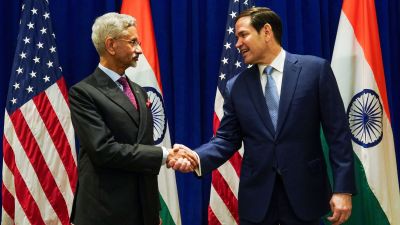Stay updated with the latest - Click here to follow us on Instagram
From the Shadow Lines
Canadian war photographer Lana Slezics images focus on women as victims of the Afghanistan conflict
Each time photographer Lana Slezic stepped out on Kabuls streets with her camera,there was an inescapable reality staring at her the helpless women. There was a lot of disconnect about the condition of women being circulated in the western media and what was happening on the ground. It was untrue that women were better off and they had more freedom. It was just the opposite, says Slezic,a Canadian war photographer who was covering the Afghanistan conflict between 2004 and 2006. Embedded with a Canadian military unit to document the war efforts of the Canadian armed forces,40-year-old Slezic would always despair seeing the condition of the local women.
So she set out to document their stories through her camera,which culminated in a photo-book of 59 coloured images titled,Forsaken (2007). Now 28 of these images have travelled to India for the first time and are on display as part of an exhibition by the same name,at the India International Centre,Annexe,this week. I set out to document these womens stories and their reality at the time. Many of the women I visited were living in fear and under oppression. They were forced into marriage,and were victims of forced abortions,honour killings and domestic violence, adds Toronto-based Slezic,over a telephone conversation.
For the photo-essay,Slezic,who was accompanied by an Afghan translator,travelled across the country in between official duties as the photographer for Canadian Geographic Magazine in 2004.
Most images present a poignant and gritty account of the condition of women and girls in Afghanistan; of surviving the daily hardships in that country. One of her first assignments documenting the women comprised visiting centres of prostitution and women in the flesh trade. An image of a woman hiding behind a white lace curtain against a red backdrop symbolises the secrecy. The cover of the book has a woman in a pearl necklace with her thumb showing. Most women were forced into this trade. They told me their stories and I became ensconced in their issues trying to understand their reasons, says Slezic,who visited Afghanistan,just after the Taliban was ousted and the country was trying to put itself together. Other images include young girls dressed as brides; a school for girls in progress; and an Afghan girl running freely in the green fields,among others.
Slezic has also captured women who went on to become international figures,such as Malalai Kakar,a high-profile Afghan policewoman,who was assassinated by the Taliban in September 2008 for being outspoken. I met her in 2005 and she was this really strong-willed woman. Ironically,she was assassinated in front of the home where I met her, says Slezic,referring to an image of Kakar holding a pistol and dressed in a blue burqa.
Slezic,who lived and worked in Delhi for four years,has received international awards in the past which include International Summit Creative Award,Society for News Design Award and the Luis Valtuena Award for Humanitarian Photography. In 2008,Slezic travelled to Afghanistan for another photo-essay,this time the approach was different. She was not documenting the personal stories of local women,instead she was taking portraits of local women. I have realised that Afghanistan is a culture stuck in an archaic period. They are sandwiched between a country that wants democracy and where women are living in fear, explains Slezic,who is not planning a trip to Afghanistan soon.
The exhibition is on till July 24th at IIC Annexe. Contact: 24619431







